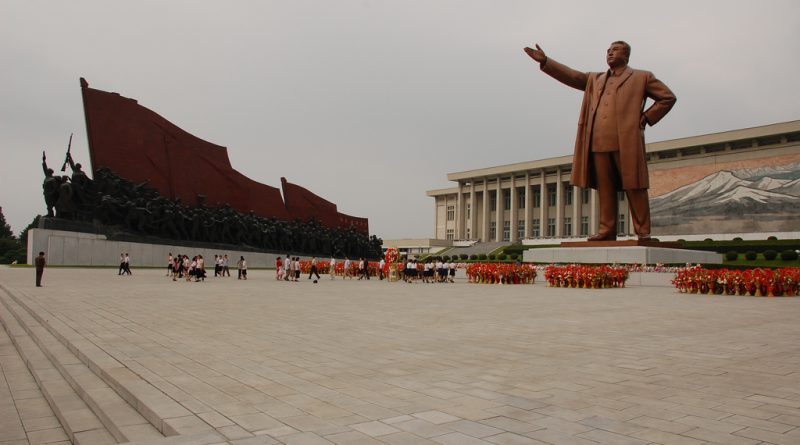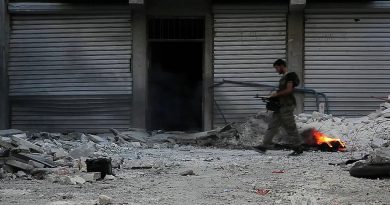War Games: The Growing Threat of North Korea
On February 12, North Korea successfully tested a new surface-to-surface medium to long range missile which traveled 500km before landing in the Sea of Japan. The country is currently prohibited from launching ballistic missiles under several UN Security Council Resolutions, adopted as a response to the rogue nation’s nuclear endeavors.
Unlike other North-Korean land missiles, the aforesaid test is believed to have made use of a solid-fuel propelled engine, which represents a major step-forward to the country, as the new system requires minimal preparation, and makes it simpler to hide arsenal underground.
History of Pyongyang’s Missile Program
The country’s missile program started with tactical artillery rockets in the 1960’s, and reached its modern stage in 1976, with the acquisition of Scuds from Egypt, which were reworked with the help of Soviet and Chinese engineers. The main reason attributed the development of a multifaceted program were South Korea’s efforts (see pages 240-241) to develop short-range ballistic missiles in February, 1974. Other factors identified were the increasingly rocky North Korean-Russian relations, the refusal of the later to supply additional weaponry, Kim il-Sung’s military policies and state ideology, and Egyptian and Syrian’s advances in the field in question.
The following two decades marked Pyongyang’s progress to short and medium-range missiles, and the state is currently believed to be developing intercontinental ballistic missiles (ICBM), whose estimated range figures between 5500 and 10 000 km.
Increased Activity
As is the case with miniaturized nuclear warheads, there is no evidence that the necessary capabilities to develop long-range ballistic missiles have been obtained, although in September, 2016, a leading expert on North Korea’s weapons program, warned that such a breakthrough could happen within the next 5 to 10 years. Another 2016 analysis, on the other hand, stressed that the recluse country’s rival neighbors were already facing impending danger, as North Korea’s Nodong missiles could hit any target in the Korean Peninsula, as well as much of Japan, including the U.S. Okinawa base – one of Pyongyang’s likely strategic targets.
North Korea is one of the world’s most active exporters of ballistic missile-related components and technology since the end of the Cold War, although it is noteworthy that there have been fairly few flight tests when the country’s interests in the field are considered. However, since early 2016, there has been an unprecedented intensification in the activity of the state’s nuclear and missile programs, with 2 nuclear tests and 22 ballistic missile launches. Additionally, threats regarding the launch of long-range missiles and the execution of preemptive nuclear strikes have become a staple of Kim Jong-un’s regime.
International Tensions
In the day that followed the missile launch, a Chinese government spokesman declared that his nation condemned any North Korean missile launch in violation of U.N. Security Council Resolutions. While in recent years China has adopted a tougher line regarding Pyongyang’s military ambitions, the country still dismissed calls to intervene more in North Korea, putting the blame on the latter country’s troubled relation with the U.S. and South Korea. The two nations, along with Japan, also condemned North Korea’s missile launch, with the Pentagon reaffirming its “ironclad security commitments” to South Korea and Japan.
The Future
One undeniable factor that can be taken from North Korea’s latest show of force, is that the new technological developments have hindered the ability of Pyongyang’s adversaries to destroy its missiles before they are launched. While currently that limitation is lessened by the fact that it is still unproven that North Korea has developed miniaturized nuclear warheads and ICBM missiles, scenarios of a preemptive military response against the hermit state have become less attractive. Therefore, new courses of action must be exhausted.
Sanctions have proven to be an effective foreign policy tool against Iran’s nuclear program. However, they can take a long time to work, and the fact that North Korea has already been so isolated for decades strongly lowers their impact (see page 200). Additionally, while comparisons are inevitably made between the two countries, it is important to note that they differ in very significant elements such as leadership, society, relative weakness compared to its neighbors, and nuclear capabilities. Therefore, Iran had much stronger incentives to pursue to accept a nuclear deal and free its economy of sanctions. Still, following China’s February 18 ban on all coal imports from the rogue state, which constitutes North Korea’s main export (about 20% of its total trade, and over 50% of its exports to China last year), is a development that will certainly cripple the already frail economy. But it may come at the cost of an added encouragement for missile and nuclear advancements.
In any case, while China remains unwilling to destabilize Kim Jong-un’s regime, the country’s unique relationship with North Korea can prove to be absolutely vital in the drafting of a peace deal to end the Korean War – a propose made by Pyongyang to U.S. officials back in 2016, but which was reject on grounds of excluding the denuclearization of the Peninsula from the talks. As a candidate, Donald Trump expressed that he would welcome the North Korean leader to the U.S. and “talk him out of those damn nukes” over burgers. Given that a military response is becoming rapidly less viable, and that sanctions work limitedly without engagement, opening dialogue with North Korea is left as the best alternative for peace, and one that won’t risk so many innocent lives.
Pyongyang, North Korea. Photo by Stephan / CC BY-SA 2.0
![]() This work is licensed under a Creative Commons Attribution-NonCommercial-ShareAlike 4.0 International License.
This work is licensed under a Creative Commons Attribution-NonCommercial-ShareAlike 4.0 International License.




